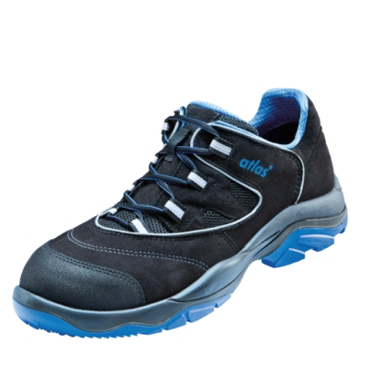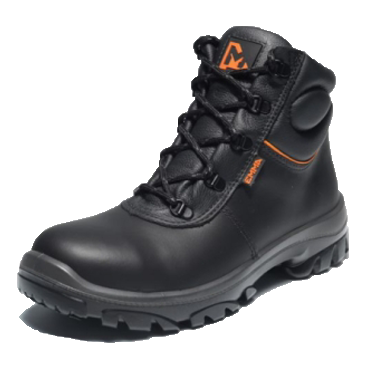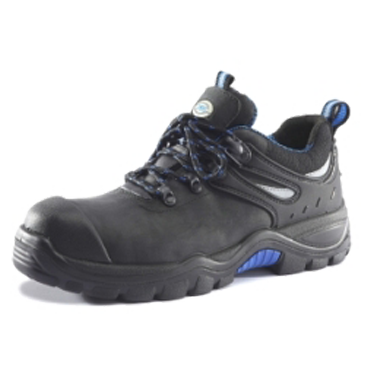
Which safety shoe for which working environment?
Safety shoes and footwear are part of the personal protective equipment (PPE) and have extensive protection mechanisms. They must adhere to a number of safety standards, which are specified in regulations and norms.
Safety shoes are used in occupational fields in which the wearers are exposed to various dangers and hazards that may affect their health, and they also protects against falling and tripping. Foot protection is not only an issue of personal safety. There are also special shoes that protect products from contamination, an essential aspect when working in cleanrooms. These are usually thin disposable shoes, which are put directly over the soles.
Safety Standards
For ideal safety and comfort there are norms and classes which divide the shoes into categories and thus simplify the selection. The standards describe the protective mechanisms which must be given.
DIN EN ISO 20345 describes the standards for high-performance safety shoes which have to withstand impact energy of 200 joules and a pressure of 1.5 tons. Furthermore, a
toe cap (usually in the form of a metal casing) must be integrated.
DIN EN ISO 20346 regulates the standards for safety shoes for medium loads and with integrated toe caps. This standard resists an impact energy of 100 joules and a compressive force of one ton.
DIN EN ISO 20347 regulates that the footwear must be equipped with at least one protective component, but a toe cap is not mandatory.
These standards also specify the shape of the shoe and differentiate between low shoes and boots (low, mid high, high and thigh high). This standard also regulates additional attributes such as
waterproofness, penetration protection and cut resistance.
If these standards are adhered to, a specification corresponding to occupational safety is created for each field of activity.
Protection classes
Depending on the field of application, the safety shoes are distinguished by the following protection classes:
Our recommended products |
||
 |
 |
 |
| PORTWEST Safety shoes S3 FW23 black size 39 high | RX Safety shoes RX S3 Solido NBR/PUR HO size 39 (6) high | AMBLERS Black 4-Eyelet Leather Lined Brogue Shoe Sz10 EN 20345 S1P SRC |
| ERIKS item #: PORTFW23BKR39 | ERIKS item #: RX-SOLIDO-39 | ERIKS item #: AMBLFS44/10 |
| Buy now | Buy now | Buy now |
Other definitions
There are more special properties that can define safety shoes:
- P: Resistance to penetration by sharp objects
- A: Antistatic footwear (resistance between 0 and 0.1 mΩ)
- C: Conductive footwear (resistance between 0.1 and 1000 mΩ)
- CI: Cold isolation
- M: Metatarsal protection
- E: Energy absorption of heel region
- HI: Heat insulation
- HRO: Heat resistant walking area
- ESD: Electrical discharge (resistance between 0.1 mΩ and 35 mΩ)
- WRU: Water resistant upper material
You can therefore recognize the safety level of a shoe by its properties. In addition, a sole must also be able to withstand certain situations, so it must have slip resistance (anti-slip) for the following
three situations:
- Slip resistance on ceramic tiles
- Slip resistance on steel floors
- Slip resistance on ceramic tiles and steel floors
The right shoe for every application
For safety shoes, a distinction is made between individual hazard categories. Protection against mechanical impact is the basic prerequisite for the vast majority of all applications: it includes
causes such as falling objects, chainsaws cuts, liquid metal and metal splatter.
Additionally, special requirements may arise in certain fields of work. When working on power lines and electrical equipment, it is necessary that boots are isolated from electrical voltage. Exactly
the opposite effect is a prerequisite when working on sensitive components. Here, electrostatic charging must be prevented.
Furthermore, in a variety of applications, the protection against thermal effects or moisture and various weather conditions is necessary. If safety shoes are worn outdoors, insulation
is recommended. Any work area that requires foot protection must also be easily identifiable as such.
Special forms of safety shoes are visibly marked with pictograms and are perfectly suitable for this application. For example:
Foot protection for welders where there are no elements in the front area where liquid metal could adhere.
Foot protection for work with spray equipment, which is ideally worn in combination with protective leggings and can withstand a pressure under 250 bar.
Foot protection against chainsaw cuts, with protective material permanently attached to the shoe, which is divided into different levels of protection depending on the chain saw speed.
Foot protection for work on live parts subject to electrical class 00 (500 VAC or 750VDC) or class 0 (1000 VAC or 1500VDC).
Foot protection against chemicals, which protects against certain chemicals or is highly resistant to certain substances.
Orthopedic foot protection requires certification, a CE mark, and is also subject to the provisions of DIN.
![]()
Wide assortment of foot protection equipment
Our range of foot protection equipment offers a wide selection of work and safety shoes that cover the specific needs of every company.
See the assortmentWear comfort
It is obvious that protection from physical danger to your feet is in first place. But wearing comfort is also of big importance, especially considering certain fits, shoe shapes or the closures of a shoe. Do you transpire a lot? Then we advise you to change your shoes regularly and always have a second pair ready.
New shoes every year
The durability of safety shoes can be increased by proper cleaning. Yet you have to purchase a new pair of shoes every year, in the case of intensive use maybe even more often.
You can no longer use the shoes when the profile is worn out, a seam is open, or when you can see the toe flaps. You are then no longer guaranteed a proper protection.
A safe step
Work shoes or safety shoes are an essential part of modern workwear. It is not only useful for different business areas, but also mandatory. They protect feet and legs against dangerous external influences, prevent accidents at work and are - especially for a longer period - more comfortable than normal shoes.

Do you have questions about our products?
For personal advise and product knowledge, visit an ERIKS location near you or contact our product specialists.
Find a service center | Call our Customer support | Send us an e-mail





